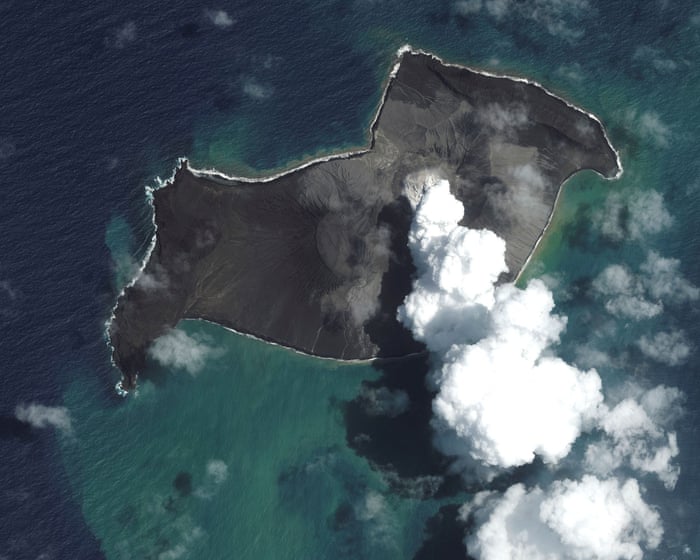This CSS code defines the “Guardian Headline Full” font family with various styles and weights. It includes light (300), regular (400), medium (500), and semibold (600) versions, each in both normal and italic styles. The font files are provided in WOFF2, WOFF, and TrueType formats from the Guardian’s web assets.This CSS code defines several font families for the Guardian website, specifying different weights and styles with their respective file formats (WOFF2, WOFF, TTF). It also includes media queries for responsive design, adjusting styles based on scripting status, user motion preferences, and screen size. Additionally, it sets color variables, layout properties for interactive elements, and specific styles for components like the credits card and film promo, ensuring a consistent appearance across devices.The credits card uses specific fonts and sizes for its text elements. Links and paragraphs within the credits card are displayed inline-block with a serif font at 24px, bold weight, and 115% line height, with a bottom margin of 20px and a maximum width that fits their content. Paragraphs are set to lowercase with normal letter spacing.
A heading within the credits card is positioned absolutely at the center, using a sans-serif font at 14px, uppercase text with 2px letter spacing. Other paragraphs in the card also use the same sans-serif font and size, with some having uppercase styling and letter spacing.
Links in the credits card share the serif font, size, weight, line height, margin, and max-width properties, and are colored white without an underline on hover. The last link has no bottom margin. The card’s container is absolutely positioned, centered, and uses flexbox to align items vertically.
An iframe in the credits card has a width of 85% of the viewport, a 16:9 aspect ratio, a maximum width of 680px, and a bottom margin of 12px.
The interactive gallery wrapper has a minimum and fixed height set to the viewport height, a dark background, centered alignment, and negative margins that adjust at larger screen sizes. When containing a fixed element, alignment is reset.
The interactive gallery itself has a width based on the viewport, a maximum width that changes with screen size, centered positioning, white text, flex display, a maximum height of 60% of the viewport, hidden overflow, a border, and rounded corners. It includes a gradient overlay at the bottom and disables pointer events for links. Figures and captions are optimized for performance.
The inner container of the gallery has a relative position and adjusts its width. When fixed, it covers the entire viewport with a black background, fixed positioning, scrolling enabled, and no borders or rounded corners. Text elements within the fixed mode have specific padding, max-width, and color settings, and figures are scaled to full size with adjusted margins and opacity. Images in fixed mode have a maximum width of 980px and are centered.This CSS code defines styles for an interactive gallery. It ensures images and videos are displayed correctly with responsive design, adjusting to different screen sizes. Text elements like headings and captions have specific fonts, sizes, and colors for consistency. The gallery includes interactive features such as buttons to open and close overlays, with hover effects for better user experience. Videos are set to cover their containers fully, and captions are styled to be clear and readable. The layout is optimized for both mobile and desktop views, maintaining a clean and engaging presentation.The CSS code defines styles for a full-screen interactive header with a video background and text overlay. It positions elements to cover the entire viewport, hides certain components, and adjusts margins and padding for different screen sizes. The header text is centered at the bottom with a semi-transparent background, using specific fonts and sizes that change on larger screens. The headline includes an “Interview” label and is split into parts with adjusted margins for visual alignment.For the main interactive column’s header, the second part of the headline has a font size of 17px, 125% line height, no padding, normal font weight, a maximum width of 280px, and is centered. On screens wider than 46.25em, the font size increases to 20px and the max width to 335px. Names within this part are displayed in italics.
The standfirst section has no padding, and its paragraphs are white. The meta section has no maximum width, and its social links and buttons turn black on hover without underlines, with their icons also changing to black. Comment functionality is hidden, and byline links have no borders.
In app rendering, the header wrapper’s height is set to the full viewport height. The video cover card is positioned absolutely, covering the entire area with a semi-transparent black background and a flex layout for content distribution. The poster video is dimmed to 50% brightness. The cover content is centered with a description that has top and bottom margins and a max width of 80% (or 400px on wider screens). Text is in a specific sans-serif font, uppercase with letter spacing, and white, with headings in normal weight. The title is centered and white.
Video controls include a centered play button with a circular border, white text and icon, which changes to dark text on hover. The snap video wrapper is relatively positioned.When the screen is at least 740 pixels wide, the video wrapper will have no side margins. The video container inside smoothly fades in or out over half a second. For app displays, both the header and video wrapper are set to fill the full screen height, adapting to web and iOS views.
A set of dots for page navigation stays fixed on the right side, centered vertically, arranged in a column with small gaps between them. They appear smoothly and sit above other content. On wider screens, their position adjusts to stay aligned with the content’s center. Each dot is a small, rounded rectangle that changes color when hovered over or active.
Navigation arrows are fixed at the bottom right but only show on larger screens. They are styled as rounded buttons with a blurred dark background and change appearance on hover. Their position also shifts with screen width to remain centered.
Interactive buttons for galleries and video controls lighten in color when hovered, and their text and icons turn dark.
Credits:
Interview and cinematography: David Levene
Multimedia editor: Laurence Topham
Design and development: Harry Fischer and Pip Lev
Picture editor: Matt Fidler
Head of photography: Fiona Shields
“Love+War” will be available on Disney+ and National Geographic starting 7 November 2025.
Content from Iraq 2003-2004:
Reflection: “I was so young and so naive”
Coverage includes Iraq and Afghanistan.
Warning: Some images may be distressing to viewers.
Fullscreen images:
1. An Iraqi woman searches for her husband amid smoke from a burning gas factory in Basra, Iraq, May 2003. Photo by Lynsey Addario.
2. Injured U.S. soldiers being transported by bus from Balad hospital to an evacuation flight during the Battle of Fallujah, 13 November 2004. Photo by Lynsey Addario/Getty Images.
3. U.S. Marines carrying a wounded soldier from the 173rd Battle Company in Korengal Valley, Afghanistan, 23 October 2007. Photo by Lynsey Addario.
4. Noor Nisa, 18, in labor with her mother in Badakhshan province, Afghanistan, November 2009. Her husband’s first wife died in childbirth.The baby was due, so he was set on driving her to the hospital, four hours away from their village. When the car he borrowed failed, I stepped in and drove them there, where Noor gave birth to a baby girl.
US marines in female engagement teams are shown with HM2 corpsman Elena Woods, 24, cleaning her weapon after coming back from a forward operating base at Camp Delhi in Helmand, Afghanistan, on April 29, 2010. These teams worked with marine infantry to connect with Afghan women.
Corporal Lisa Gardner checks the vital signs of Afghan women in Lakari village during a medical outreach in Helmand, southern Afghanistan, on May 3, 2010. Due to cultural norms, many women in Helmand can’t leave home or see male doctors, so Gardner recorded their symptoms and passed the information to a doctor for a basic diagnosis before providing medication.
Thousands of Syrians crossed into Iraq near the Sahela border in Dahuk, northern Iraq, on August 21, 2013. The UN Refugee Agency reported over 30,000 had entered since the border reopened the week before, with daily crossings of three to four thousand. Most were Kurdish refugees escaping violence, economic hardship, and shortages of essentials like electricity, water, and food.
In Darfur from 2004 to 2009, the government was accused of killing its own people.
Chadian girls endure a sandstorm in Bahaï, Chad, about seven kilometers from the Sudanese border, on August 18, 2004. Many refugees fled Sudan into Chad as conflict continued in Darfur.
Lynsey Addario photographed Sudanese Liberation Army rebels, who controlled parts of Darfur, on August 19, 2004.
SLA soldiers wait by their truck stuck in mud in Darfur on August 21, 2004. They were boycotting peace talks in Nigeria to protest attacks on civilians, claiming 75 deaths in six villages. Since the conflict began in February 2003, up to 50,000 had died, and over a million fled their homes fearing Janjaweed militias.
SLA soldiers pass a dead body from an attack on civilians in Farawyaiah, Darfur, on August 24, 2004. Sixteen bodies were found in ravines after men from five villages were allegedly killed by Janjaweed supported by government forces.
African Union soldiers discover the village of Tama still smoldering over a week after an attack by Arab nomads backed by government forces north of Nyala in November 2005. The AU tried to patrol and investigate, but survivors had fled to a nearby village, blocked by nomads who shot at approaching vehicles. Hundreds of villages in Darfur were burned and looted by Arab nomads.
The village of Silea, recently bombed by the Sudanese government and attacked by Janjaweed on camels, horses, and donkeys in West Darfur on February 28, 2008. The bombings were a response to an ambush.Two months earlier, rebels from the Justice and Equality Movement had taken control, and intelligence indicated they were living in these villages and using them as a base. Photograph: Lynsey Addario/Getty Images
View image in fullscreen: Sudanese women wait for aid from international humanitarian organizations in the village of Selea, February 2008. Photograph: Lynsey Addario
Libya 2011
‘You could hear the metal whiz past your ears’
Warning: Some viewers may find the following photographs distressing
View image in fullscreen: Libyans protest against Colonel Muammar Gaddafi in Benghazi, Libya, 26 February 2011. Clashes between opposition forces and Gaddafi loyalists were ongoing across the country. Photograph: Lynsey Addario for The New York Times
View image in fullscreen: Children play near a burning car in a Benghazi neighborhood, Eastern Libya, 28 February 2011. Dangerous confrontations continued between opposition and pro-Gaddafi forces. Photograph: Lynsey Addario for The New York Times
View image in fullscreen: Opposition soldiers engage Gaddafi loyalist troops in Brega, Libya, 4 March 2011. Photograph: Lynsey Addario/Getty Images
View image in fullscreen: Opposition troops shoot at a portrait of Gaddafi while celebrating retaking the city from his forces, west of Ras Lanuf, 5 March 2011. Photograph: Lynsey Addario/Getty Images
View image in fullscreen: Opposition troops rally and chant as government airstrikes hit the main checkpoint near the Ras Lanuf refinery, Eastern Libya, 11 March. Photograph: Lynsey Addario for The New York Times
View image in fullscreen: Opposition troops burn tires for smoke cover during airstrikes as they retreat from Ras Lanuf, Eastern Libya, 11 March. Photograph: Lynsey Addario
View image in fullscreen: Journalists, including New York Times photographers Tyler Hicks (right) and Lynsey Addario (far left), take cover during a Libyan government bombing near the Ras Lanuf oil refinery, 11 March 2011. Hicks, Addario, and NYT correspondents Stephen Farrell and Anthony Shadid were reported missing after being caught behind Gaddafi’s advancing lines. Photograph: Paul Conroy/Reuters
Ukraine 2022
‘It felt very tense’
Warning: Some viewers may find the following photographs distressing
View image in fullscreen: Ukrainians clear debris after a missile strike on a residential building in southern Kyiv, 25 February 2022. Russian troops had entered the city, and residents prepared for a battle. Photograph: Lynsey Addario for The New York Times
View image in fullscreen: Julia, a 29-year-old Ukrainian teacher and volunteer, cries while waiting to be deployed against Russian forces in Kyiv, 26 February 2022. Photograph: Lynsey Addario for The New York Times
View image in fullscreen: Ukrainian families rush across train tracks to board a westbound train from Kyiv to Lviv at the main station, 4 March 2022. Tensions were high as Ukrainians readied for combat. Photograph: Lynsey Addario for The New York Times
View image in fullscreen: A Ukrainian soldier runs to assist a family while another volunteer lies injured after a nearby mortar strike in Irpin, 6 March 2022. Civilians fled as soldiers defended the approach to Kyiv. Photograph: Lynsey Addario/Getty Images
View image in fullscreen: Some of the last civilians are evacuated from Irpin across a bridge on Kyiv’s outskirts amid ongoing fighting, 8 March 2022. Photograph: Lynsey Addario for The New York TimesLynsey Addario was a Pulitzer Prize finalist for this photograph showing Ukrainian soldiers trying to help a family moments after they were struck by a mortar shell while fleeing Irpin, a suburb of Kyiv. Tetiana Perenyibis and her children Mykita and Alisa were killed, as was Anatoly Berezhnyi, a church volunteer who was guiding the family to safety. The attack occurred on March 6, 2022. Photograph: Lynsey Addario for The New York Times
A Ukrainian woman cries as civilians and soldiers celebrate their liberation from Russian forces, one day after Russia officially announced its withdrawal from villages along the Kherson front in Snihurivka, southern Ukraine, on November 10, 2022. This marked Russia’s third major retreat after Kyiv and Kharkiv during its invasion of Ukraine. Photograph: Lynsey Addario for The New York Times
Family and War
‘I don’t want my kids to suffer’
Warning: Some viewers may find the following images disturbing
Lynsey Addario at home with her son Alfred before departing on assignment. Photograph: Caitlin Kelly/National Geographic
Addario in Afghanistan, 2010. Photograph: Lynsey Addario
African migrants from Gambia, Mali, Senegal, Ivory Coast, Guinea, and Nigeria in an inflatable boat between Italy and Libya, October 4, 2014. They reported leaving Tripoli on the evening of October 3 and spent the night traveling north. Photograph: Lynsey Addario
Chuol fled into a vast swamp in South Sudan after fighters attacked his village, September 2015. Photograph: Lynsey Addario
Jamie Ferguson, 50, one of the longest-staying ICU patients at 74 days, slowly recovers from Covid-19 while connected to an ECMO machine at Royal Papworth Hospital in Cambridge, England, June 2020. Photograph: Lynsey Addario
Addario covering the California wildfires in 2021. Photograph: Lynsey Addario
Six-year-old Sonya Kryvolapchuk lies semi-conscious beside her mother, Natalia, 27, as she administers paracetamol via a syringe port at the Misto Dobra palliative care center in Chernivtsi, Ukraine, July 28, 2024. Retinoblastoma cancer has spread throughout her body. Photograph: Lynsey Addario for The New York Times
Lynsey Addario says goodbye to her son Lukas before leaving on assignment, April 2025. Photograph: Caitlin Kelly/National Geographic
Lynsey Addario on assignment in Tiné, on the Sudanese border in northeastern Chad, May 2025. Photograph: Caitlin Kelly/National Geographic
Frequently Asked Questions
Of course Here is a list of helpful and concise FAQs about Lynsey Addarios talk Love and War From the Battlefield to Home Life
General Beginner Questions
1 Who is Lynsey Addario
Lynsey Addario is a Pulitzer Prizewinning photojournalist known for her powerful work documenting conflict humanitarian crises and the lives of women in war zones
2 What is this talk Love and War about
Its a talk where Addario shares the five most significant stories from her career that have shaped her perspective on both her dangerous work in conflict zones and her personal life at home
3 Why is her work so important
Her photographs provide a vital humanizing look at the true cost of war giving a voice to those who are often unseen and bringing global attention to critical issues
4 What kind of places has she worked in
She has documented conflicts and crises in countries like Afghanistan Iraq Sudan Libya and the Democratic Republic of Congo
5 Has she ever been in danger while working
Yes frequently She has survived car accidents been kidnapped and has constantly worked in active combat zones which she often discusses as part of her story
Deeper Advanced Questions
6 How does she balance the extreme danger of her job with having a family
This is a central theme of her talk She discusses the constant internal conflict between her professional calling to document truth and the personal responsibility and fear that comes with being a mother and partner
7 What does she mean by the title Love and War
The title reflects the two powerful forces that define her life War represents her professional dedication to documenting conflict while Love represents her family and personal life which are both her anchor and a source of new fears
8 Can you give an example of one of the five stories that shaped her
While the specific five are detailed in her talk they often include pivotal moments like her early work under the Taliban in Afghanistan her experience being kidnapped or covering maternal mortality each teaching her about humanity resilience and her own limits
9 What is the main message or takeaway from her talk
The talk emphasizes the human cost of war the resilience of the human spirit and the complex ongoing negotiation between pursuing a demanding purposeful career and




